The functioning of the foot affects the condition of the lower limbs, blood vessels and ODA. Due to the wearing of uncomfortable shoes, prolonged stay in one position, physical activity, etc., the feet cease to function normally and begin to deform. Orthopedic insoles will help to solve this problem. They not only prevent, but also correct the curvature of the feet, allowing them to be in the anatomically correct position. To achieve this result, you need to know certain nuances. Our article will show you how to choose orthopedic insoles.
Content
Orthopedic insoles device
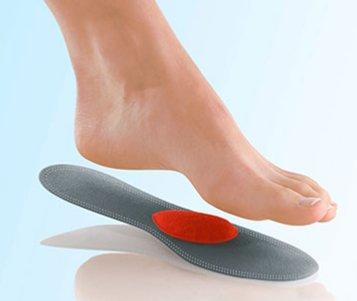
Orthoses are special shoe insoles that provide the foot with correct position and cushioning.
The product consists of an instep support, a metatarsal cushion and a heel depression.
It is this relief that provides a therapeutic effect. The insoles are made of polymer and natural materials.
Also, the functionality of the insole includes:
- normalization of the balancing and spring function of the foot;
- stabilization of blood circulation;
- maintaining the arch of the foot;
- increasing endurance during a long stay on your feet;
- reduction of swelling and pain in the lower extremities;
- prevention of the development of various articular pathologies.
Types of orthopedic insoles
There are several varieties of these products.
Massage
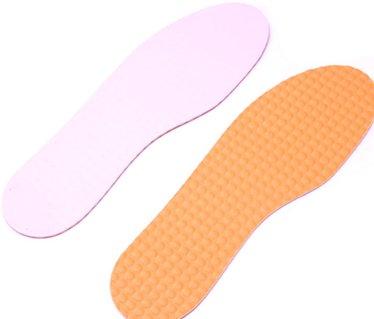
Anatomically shaped products with a soft frame. Massage the foot effectively. Sometimes magnetic balls are added, which enhance the massage effect. These insoles are best for people who have to stay upright for a long time ..
Pros:
- relax the foot well;
- increase blood circulation;
- make the muscles of the foot stronger;
- ensure correct load distribution;
- prevent flat feet;
- relieve tension when walking;
- provide good cushioning effect.
Minuses:
- powerless with deformation of the foot.
Corrective
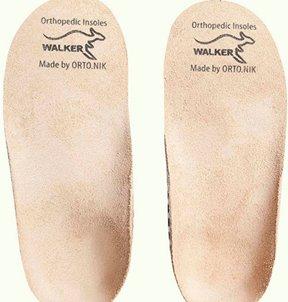
They cure deformity of the foot. Corrective elements are placed on different parts of the insole, depending on the specifics of the pathology. There are 10 types of orthoses. They provide the most suitable conditions for maintaining the correct muscle tone. As a result, blood flow, tissue and joint nutrition are stabilized.
Pros:
- distribute and reduce loads;
- prevent the development of stiffness and tension;
- improve joint activity and mobility;
- accelerate the regeneration of damaged tissue.
Minuses:
- are rarely on sale, so they need to be ordered individually, which is not affordable for everyone.
With instep support
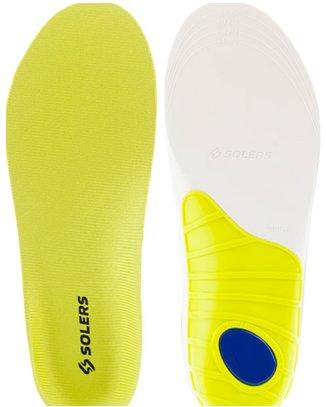
In almost 80 percent of cases, experts advise wearing insoles with an instep support. They come in many different models. Given the violations, they are prescribed for transverse flat feet and longitudinal.
Each type of shoe has its own insole. For example, for closed models, it is better to buy leather orthoses, since they will provide excellent air circulation.
Such insoles can be put into shoes when:
- extreme loads on the foot;
- flat feet;
- cramps and burning;
- pain;
- deformation of the foot due to prolonged wearing of shoes with heels;
- obesity.
Pros:
- protect joints from overload;
- have a shock-absorbing effect;
- when the foot acts as a support, the insoles reduce and evenly distribute the load on it.
Minuses:
- the predominant number of models is designed for closed-type shoes.
Diabetic
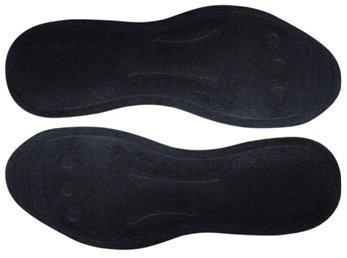
They have a soft or semi-rigid base, a heel groove, pronators and instep supports, which relieve stress on the foot and correct its position. This has a positive effect on the whole body, since it reduces the likelihood of damage to the skin due to overwork of the lower extremities, and makes walking more comfortable.
The multi-layer carcass structure rewards the insoles with good cushioning. The top layer is not slippery, moisture and air permeable, its soft surface does not damage the foot. The entire load falls on the intermediate layer. The bottom layer has an absorbent and bacteriostatic effect, ensures the correct shaping.
Pros:
- keep the foot in the correct position;
- reduce soreness, fatigue and discomfort when moving;
- do not contain rigid elements;
- make the shoe more comfortable to wear.
Minuses:
- not suitable for open shoes;
- expensive.
Baby
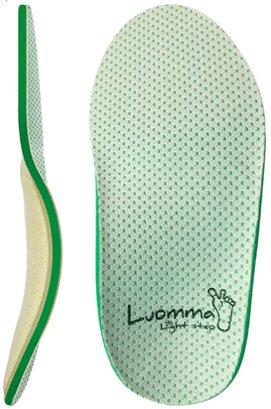
They are standard, created according to general samples (prevent deformation of the foot) or orthopedic, created according to individual parameters (used if there are deviations).
Standard forms the correct arched structure of the lower extremities. Providing a gentle supportive effect, they protect against curvature. Certain manufacturers create thermoplastic insoles that soften under the influence of high temperatures and take the shape of the foot. After cooling, the insole stays in shape and adjusts the foot.
You can buy standard models for a child when he has already learned to walk independently.
Pros:
- normalization of blood circulation in the foot;
- prevent the development of deformation;
- protect the heel from overload;
- distribute the load over the entire foot;
- soften the shocks that occur when moving;
- reduce the likelihood of calluses.
Minuses:
- individual insoles are expensive;
- standard orthoses do not cope well with curvatures.
Parameters for choosing orthopedic insoles: how to choose the right one
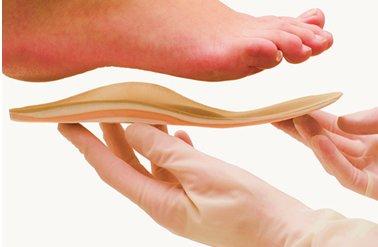
To get the maximum therapeutic effect from the product and not waste money, the following points should be taken into account when choosing an insole.
Appointment
Decide in advance why you are buying an insole, because they have either a preventive or therapeutic effect. The former are sold in any specialty store. Orthoses of the second type must be made to order, since each person's pathology of deformity of the foot manifests itself in its own way.
Support
It can be transverse, longitudinal or combined (two at once).
Material
Most often, products are:
- leather - resistant to wear, do not interfere with air circulation, retain their shape and original qualities well;
- silicone - elastic, flexible, quickly repeat the features of the leg, but not durable and heavy.
Also, products can be made from Microliner, EVA, Veldona materials. They are hypoallergenic, durable and shock absorbent. Sometimes they are impregnated with activated charcoal, which improves moisture absorption, reduces the likelihood of unpleasant odors and bacteria growth. Certain models are covered with foamed polyethylene foam to prevent chafing. This point is very important for diabetics.
Height
Multilayer insoles equipped with an instep support have a higher construction than massage and diabetic ones. This must be taken into account when choosing a product.
Rigidity
Frameworks are:
- Hard (steel, graphite, plastic). They reduce pain in the foot, prevent the arch, treat various deformities.
- Semi-rigid. Flexible plastic is used to create them. Reduces tension in soft tissues.
- Soft.Made of foam. Helps protect feet from disease.
The size
The insole should match the width and length of the foot and the shape of the shoe.
How to fit and wear
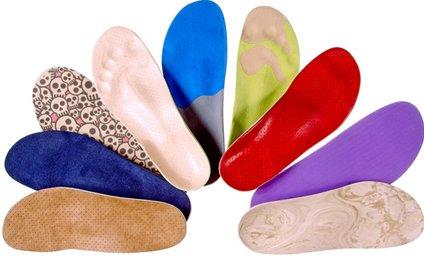
Different insoles are produced for summer and winter shoes. In the first case, they are very light and almost invisible, in the second, they are warmed, and may be with fur.
How to choose the right insoles:
- Leather, cork or foam prophylactic models will relieve pain in the legs of lovers of high-heeled shoes.
- People weighing more than 100 kg and suffering from deformity of the feet need to buy hard plastic, metal and graphite insoles.
- For calluses and corns, it is better to buy soft porous orthoses.
- People with unstable ankles or feet need to buy semi-rigid flexible plastic orthoses.
- For kids, fit thermoplastic insoles that fit over the shape of the foot.
- With a spur, it is advisable to purchase orthopedic insoles.
- For people with diabetes, it is better to buy two-layer insoles that will prevent calluses.
- For those who suffer from pain in the lower extremities, felt or woolen insoles are suitable.
- People working on legs need to choose rigid wireframes.
- It is better to put frameless insoles in sports shoes.
- If you need good cushioning, you need to buy insoles with an instep support.
- Custom-made corrective products will help to cure deformity of the foot.
- For those who spend a lot of time in an upright position, massage insoles are suitable.
- Diabetics need to buy only specialized insoles with high softness, since only they are able to remove the manifestations of the disease.
- Toddlers are suitable for children's models that form the correct position of the foot.
Preventive products can be selected independently, they are suitable for permanent use. Silicone models can be worn for a maximum of 16 hours a day. If the skin is damaged on the feet, such products cannot be used.
Before putting on orthoses, you need to remove the factory insoles from the shoe.
The duration of the use of orthoses is decided only by the doctor. It is best to wear the new model gradually, starting at 15 minutes a day. When the foot is fully adapted, the use of the insole can be extended to several hours.
Top manufacturers

Many companies are engaged in the production of orthoses, so it is difficult to choose the right model without certain knowledge. According to experts and consumers, the highest quality product is offered by three manufacturers - Oro, Ortmann and Pedag.
In their work, they use innovative technological developments in the field of orthopedics. Models made of high-quality hypoallergenic materials are resistant to wear and tear and are very durable. At the same time, they are sold at very affordable prices, so every consumer can afford to buy them. The offered products are certified.
How much are
Children: up to 2,300 rubles.
Diabetic: up to 5,300 rubles.
With instep support: up to 8,400 rubles.
Massage: up to 7,500 rubles.
Corrective: up to 16,000 rubles.
Consumer reviews
I bought myself ORTO Concept Tech insoles as prescribed by a doctor, since I was diagnosed with transverse flat feet. My insoles have a rigid frame so they are thick. I had to buy loose shoes specially for them, since they did not fit into the existing ones. Of course, such insoles cannot be put into sandals, so you have to wear a slip-on closure.
My insoles are leather, perforated. The feet are pleasant and of high quality. Since I wear them all the time, after a couple of months they begin to lose their visual appeal. One pair is enough for me for the season. The insoles are expensive, but effective. My condition has improved.
Svetlana
My son began to show flat feet, so the doctor advised to buy special Talus insoles from ORTO.NIK LLC. I am very pleased with their quality. They are frame, keep their shape well and do not lose their visual appeal. They cost only 400 rubles.They are very thin, so they fit in any shoe. Within a month, the condition of the children's feet improved. Dear parents, if you notice that your baby has problems with feet, urgently buy orthoses. They really work! My husband and I now use only such insoles!
Elena
When my daughter started working as a hairdresser, she began to worry about pain in her legs. Since there was no question of changing the profession, we turned to a specialist. He recommended massage orthoses. We bought a budget model at the pharmacy, purely for testing. After the first use, my daughter felt better! After a while, I ordered expensive insoles. Of course, you feel tired in your legs, but without insoles everything would be much worse. A very useful thing.
Svetlana
Outcome
As you can see, orthoses are useful for both adults and children. The only condition is to buy them according to the doctor's prescription, as he will select the most suitable model for you.



